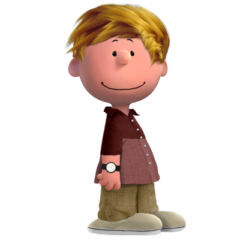I thought this short animated story was brilliant. It had many elements that symbolized the deep emotions this story conveyed in just a few short seconds on screen. Rather than re-hash the story, I intend to highlight some of the symbolism I noticed. I’m sure there is probably much more that I haven’t discovered.
First, Stop-Motion animation is my most favorite form of animation because I believe the animator(s) must have such a complete, detailed vision of the story before they begin. I believe stop-motion must be completely scripted before the story is told. There is no real ad-libbing. Each frame must be meticulously crafted to tell the story in minute detail.
Some of the early symbolism, during their “sex scene,” Madame started out a porcelain white, but at climax was more skin-toned, either pointing to her loss of innocence or her completely accepting Pinkerton as part of herself. As Pinkerton ran off, leaving his hat and his phonograph, Madame’s butterfly flies away, in what I believe symbolizes her loss of fragile innocence.
The changing landscape and weather symbolizes her ignorant hope over time; hope that Pinkerton will return to her after their one-time tryst. She gives birth to a faceless blob, crying, with one distinguishable feature – a mouth, for feeding. Interestingly, when the child is born, the hat and phonograph disappear from the story. Pinkerton has been replaced.
More symbolism in the young child saying “momma” and then being flown like a kite, which shows Madame with a purpose other than waiting for Pinkerton’s return. The child has no physical characteristics from Pinkerton. She is completely her mother’s child. The next scene, where the child is flying Madame like a kite, symbolizes Madame’s contentment with her current life. This is when the ship returns. Madame once again returns to her past, puts on Pinkerton’s hat and brings out the phonograph. The child, once with a kite string, now appears to be on a leash.
Pinkerton’s return is not for Madame, but to claim his “property,” the child, to ride along with all the other children from foreign lands, in his big car, carried away in his big fancy ship, with his perfect barbie-doll partner. Pinkerton carelessly breaks Madame’s connecting string without a backward glance. Madame is cast aside.
Here is where I find the story-teller’s brilliance, in portraying Madame’s personal sadness, pain and destruction. Her character is so completely devastated that she removes herself from the very story she is in. She breaks down the “fourth wall,” runs off the set and proceeds to disassemble herself, quite literally. She rips her face off, pulls her “skin” and stuffing off, then dismantles her “skeleton,” the very parts that made this stop-motion possible. In the final scene, her parts all fly away, morphing into the shape of a butterfly, coming to rest on another Madame in another time…
While this was just a short 10-minute animation, I was amazed at how deep and emotional the story was, conveyed through stop-motion. I really enjoyed this.
